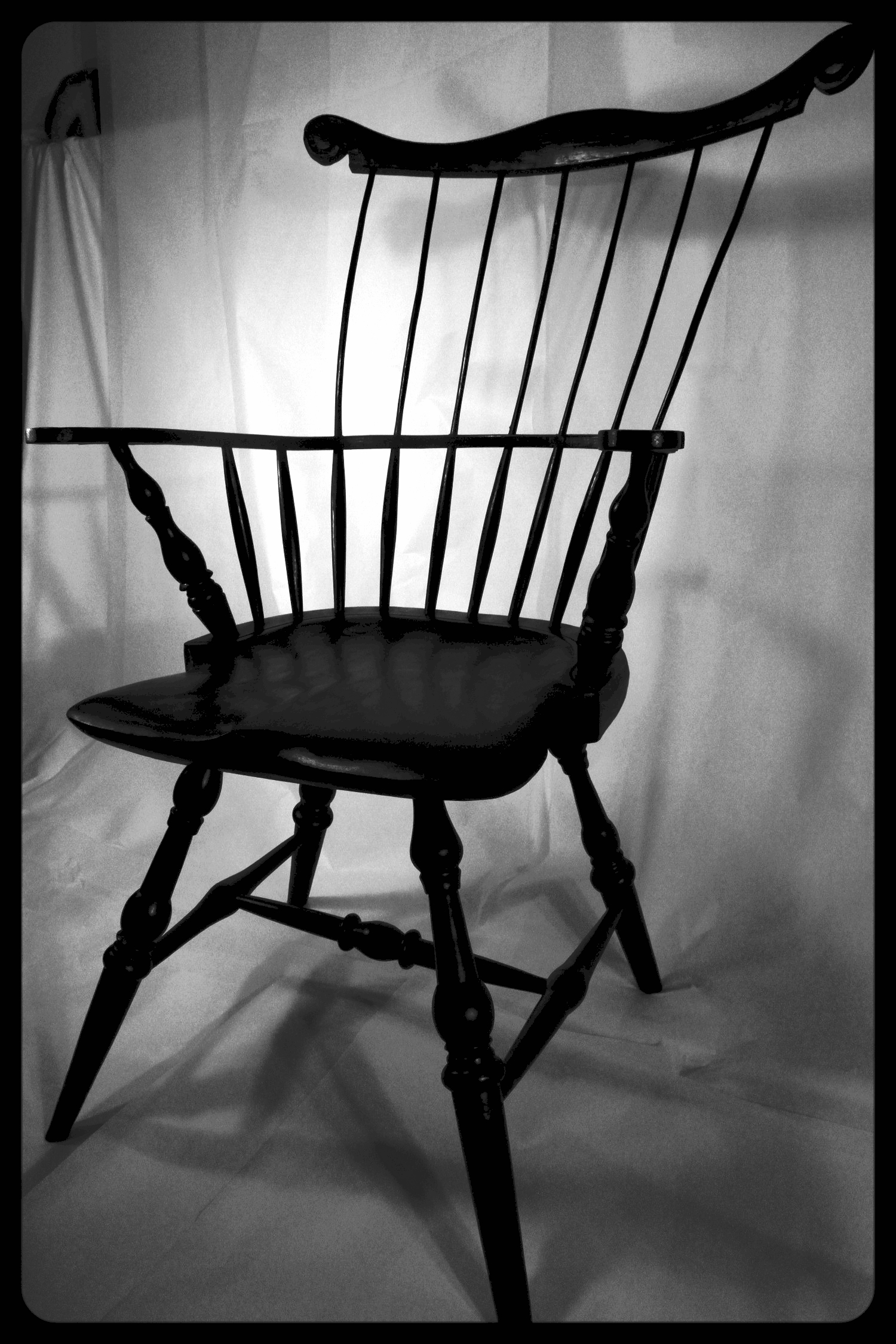Windsor Chairs
While the exact history of Windsor chairs is not known, what we do know is that the style first appeared in the American colonies late in the 18th century. Beautiful and light, their delicate appearance belies their ruggedness and enduring strength. Many examples of chairs built in the late 1770's can still be found in use today.
The secret of their longevity is in the joinery. Chair makers of that time did not have many options in their choice of glues. Instead, they developed a design that takes advantage of the characteristics of the wood and some straight forward physics.
The Seat
Windsor chair design all centers around the seat. It not only provides a solid foundation from which the legs, back and arms are based, but also is deeply carved to allow the user to be surprisingly comfortable in a wooden chair. Seats are most often made from slabs of white pine or poplar, depending on where the chair is made.
Legs
Legs for Windsor chairs are turned from hard maple and come in several different styles. The Sack back and Comb back chairs pictured here have standard baluster style legs, while the Bow Back shown below has a simple double-bobbin or bamboo style legs. Regardless of the style the joinery technique is the same. By using a tight tapered connection into the seat the leg is solidly held in place. Adding hide glue and a driven wedge from the top makes for one of the most mechanically sound joints possible. Stretchers splay the legs and are sized such that the entire under carriage of the chair remains in compression. Chairs made using this technique will never require owners to re-glue loose leg joints.
Sack back Windsor Chair
Comb back Windsor Chair
Bow Back Windsor Chair
Spindles and Backs
Windsor chairs are identified by their style of back and arms. All of them have a primary back piece, such as the crown and bow shown in the pictures. To give the chair its well established comfort and beauty these primary pieces are steamed and bent into a curve.
While most any wood can be steamed and bent, oak with its long grain and fibers is the traditional choice for Windsor chairs.
Oak is also the first choice for the spindles that tie the primary back piece to the seat. By following the grain from end to end the chair maker can make the spindles very slender. Thus the chair back will flex for the comfort of the sitter, but still be strong and durable providing a long life for the chair.
Finish
Windsor Chairs are meant to be painted. With a combination of pine, maple and oak woods, stains and clear coats will not end with satisfactory results. However, the chair makers of the 18th century did not have access to today's latex paint and that is a good thing. Milk paint provides a wide spectrum of colors and allows the beauty of the wood grain to come through. Rubbing on an oil top coat gives the chair a beautiful final look.

